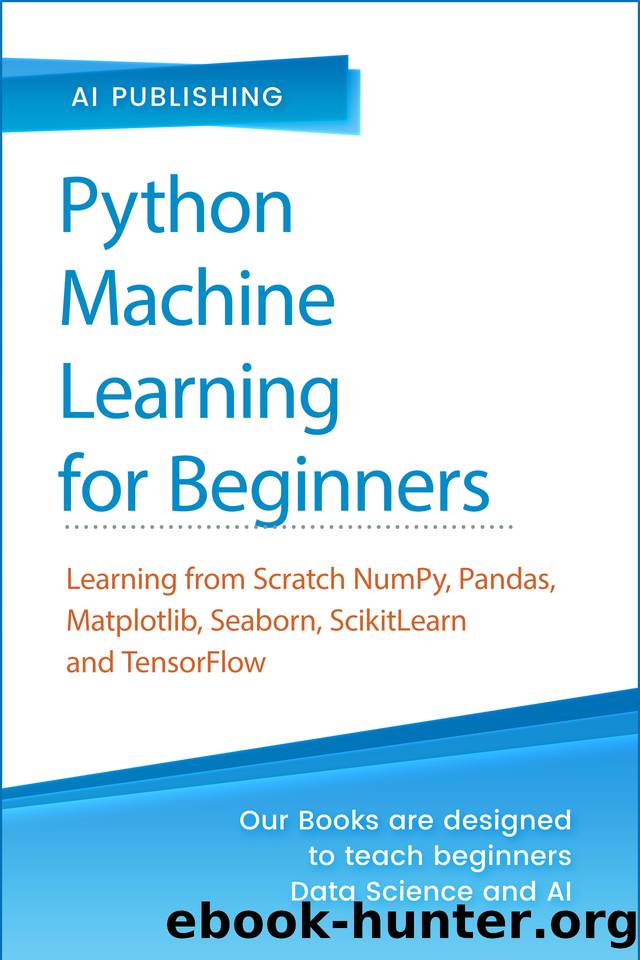Python Machine Learning for Beginners: Learning from Scratch Numpy, Pandas, Matplotlib, Seaborn, SKlearn and TensorFlow 2.0 for Machine Learning & Deep Learning- With Exercises and Hands-on Projects by Publishing AI

Author:Publishing, AI [Publishing, AI]
Language: eng
Format: epub
Publisher: AI Publishing LLC
Published: 2020-10-24T16:00:00+00:00
1. from sklearn.linear_model import LinearRegression
2. # training the algorithm
3. lin_reg = LinearRegression()
4. regressor = lin_reg.fit(X_train, y_train)
5. # making predictions on test set
6. y_pred = regressor.predict(X_test)
Once you have trained a model and have made predictions on the test set, the next step is to know how well has your model performed for making predictions on the unknown test set. There are various metrics to check that. However, mean absolute error, mean squared error, and root mean squared error are three of the most common metrics.
Mean Absolute Error
Mean absolute error (MAE) is calculated by taking the average of absolute error obtained by subtracting real values from predicted values. The equation for calculating MAE is:
Download
This site does not store any files on its server. We only index and link to content provided by other sites. Please contact the content providers to delete copyright contents if any and email us, we'll remove relevant links or contents immediately.
Hello! Python by Anthony Briggs(10193)
The Mikado Method by Ola Ellnestam Daniel Brolund(10106)
OCA Java SE 8 Programmer I Certification Guide by Mala Gupta(10041)
Algorithms of the Intelligent Web by Haralambos Marmanis;Dmitry Babenko(8585)
Sass and Compass in Action by Wynn Netherland Nathan Weizenbaum Chris Eppstein Brandon Mathis(7965)
Grails in Action by Glen Smith Peter Ledbrook(7940)
Test-Driven iOS Development with Swift 4 by Dominik Hauser(7898)
The Well-Grounded Java Developer by Benjamin J. Evans Martijn Verburg(7836)
Windows APT Warfare by Sheng-Hao Ma(7632)
Layered Design for Ruby on Rails Applications by Vladimir Dementyev(7368)
Blueprints Visual Scripting for Unreal Engine 5 - Third Edition by Marcos Romero & Brenden Sewell(7271)
Secrets of the JavaScript Ninja by John Resig Bear Bibeault(6733)
Kotlin in Action by Dmitry Jemerov(5367)
Solidity Programming Essentials by Ritesh Modi(4455)
Hands-On Full-Stack Web Development with GraphQL and React by Sebastian Grebe(4400)
WordPress Plugin Development Cookbook by Yannick Lefebvre(4266)
Unity 3D Game Development by Anthony Davis & Travis Baptiste & Russell Craig & Ryan Stunkel(4175)
Functional Programming in JavaScript by Mantyla Dan(4165)
The Ultimate iOS Interview Playbook by Avi Tsadok(4148)
